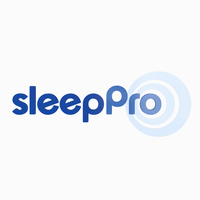Obstructive Sleep Apnea (OSA) is becoming more and more common, particularly among middle-aged men, and especially so if they are overweight. New studies have shown that drivers with untreated OSA are between three and nine times more likely to be involved in road traffic accidents. The AA in Britain has estimated that as many as 20% of road traffic accidents are likely to have been caused by drowsiness at the wheel.

Drowsy driving slows reaction time, decreases awareness, and impairs judgment, just like drugs or alcohol. While many people would never even consider getting behind the wheel after having an alcoholic drink, they don’t give a second thought to getting behind the wheel even when they’re exhausted after a poor night’s sleep.
UK commercial vehicle drivers in particular need treatment, and need it more quickly when it comes to a condition causing drowsiness at the wheel, says the Obstructive Sleep Apnea Partnership Group.
They say that a lack of adequate awareness and treatment is putting lives at risk on the road, and members include the RAC, Driver and Vehicle Licensing Agency (DVLA), Freight Transport Association (FTA) and patient groups such as the British Lung Foundation and Sleep Apnea Trust.
The group wants Department of Health guidance to be sent to clinical commissioning groups, hospitals and general practitioners with the aim of enabling all vocational licence-holders to be back driving again within no more than four weeks following their first OSA referral.
John Stradling, Emeritus Professor of Respiratory Medicine at the at the University of Oxford’s Nuffield Department of Medicine, said, “In my experience, vocational drivers are often the safest on our roads but those with OSA have no control over their sleepiness.
“We also know that these drivers are reluctant to come forward with symptoms of OSA for fear of losing their licence, and therefore their livelihood”. They believe that improved awareness can reduce this fear and therefore encourage drivers to get the treatment that will allow them to drive safely and also benefit their quality of life. Doing so will eliminate many unnecessary road traffic accidents, and ultimately reduce the number of serious injuries and fatalities – and for all drivers – not just commercial.
Treatment today is simple and fast, and can even be self-administered by the use of a simple mouthpiece while sleeping. Recommended by the NHS, and based on extensive research done at NHS Papworth Hospital, the UK’s leading Sleep Centre, the SleepPro Custom is positioned as their No.1 solution. The mouthpiece is custom-made from a postal dental impression kit, and as a result is comfortable to wear. It works immediately and is a fraction of the price of many alternative treatments and appliances.
The risks of driving with OSA are enormous and this has stimulated a major research project to be undertaken in the USA where the problem is an even greater one. The National Highway Traffic Safety Administration estimates that drowsy driving results in 1,550 deaths, 71,000 injuries and over 100,000 accidents each year.
The AAA (USA) has produced an analysis of the accidents resulting from drivers falling asleep behind the wheel that clearly shows that it is cause for alarm and concern. According to the study, younger drivers age 16-24 were nearly twice as likely to be involved in a drowsy driving crash as drivers age 40-59, and about 57% of drowsy driving crashes involved the driver drifting into other lanes or even off the road.
The following facts emerged as key conclusions:
- People with undiagnosed or untreated Sleep Apnea are seven times more likely to be at risk of falling asleep at the wheel.
- Sleep related crashes are most common in young people, between the ages of 18-29 compared to other age groups
- The figures are higher for men especially if they are shift workers.
- Men are more likely than women to drive while drowsy (56% vs. 45%) Men are more likely than women to fall asleep driving (22% vs. 12%).
- Adults with children in the household are more likely to drive when drowsy than those without children (59% vs. 45%).
It can be solved by the use of an oral appliance like SleepPro Custom – saving thousands of lives on the road and also by preventing the development of other serious health conditions, such as diabetes type II, heart attacks and strokes, that are proved to be strongly associated with Sleep Apnea.


